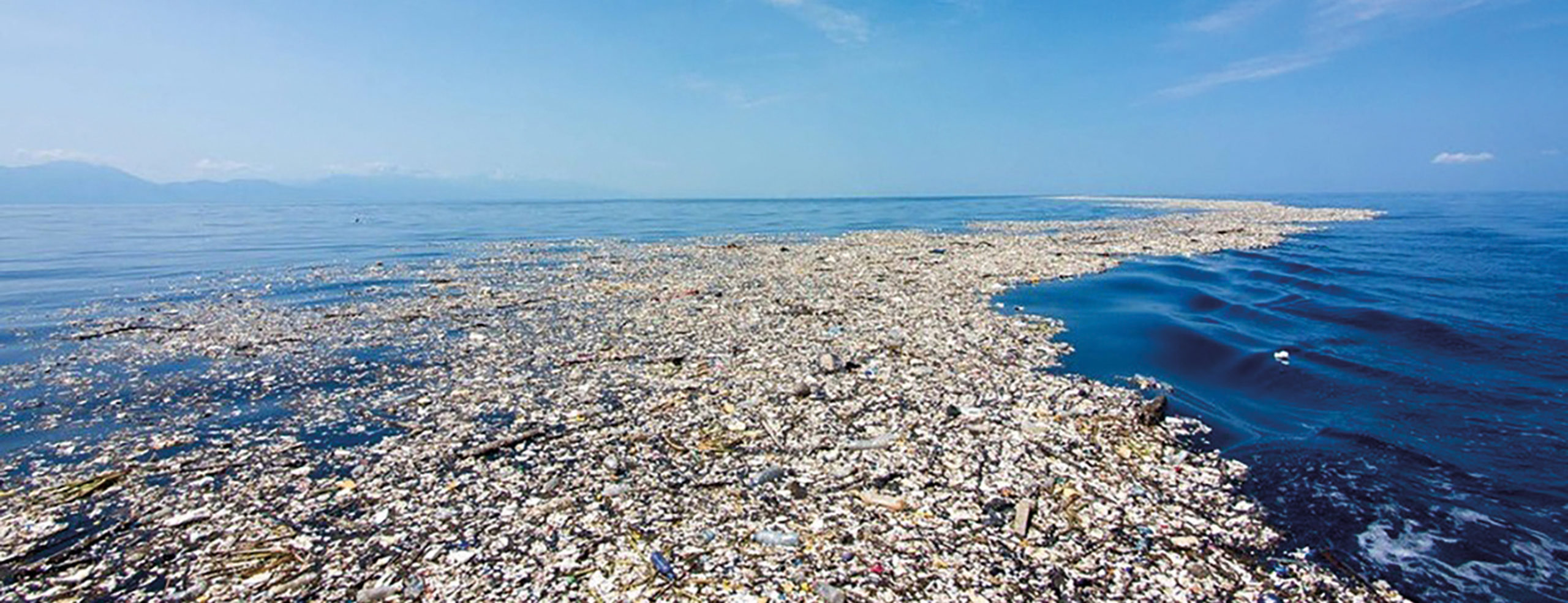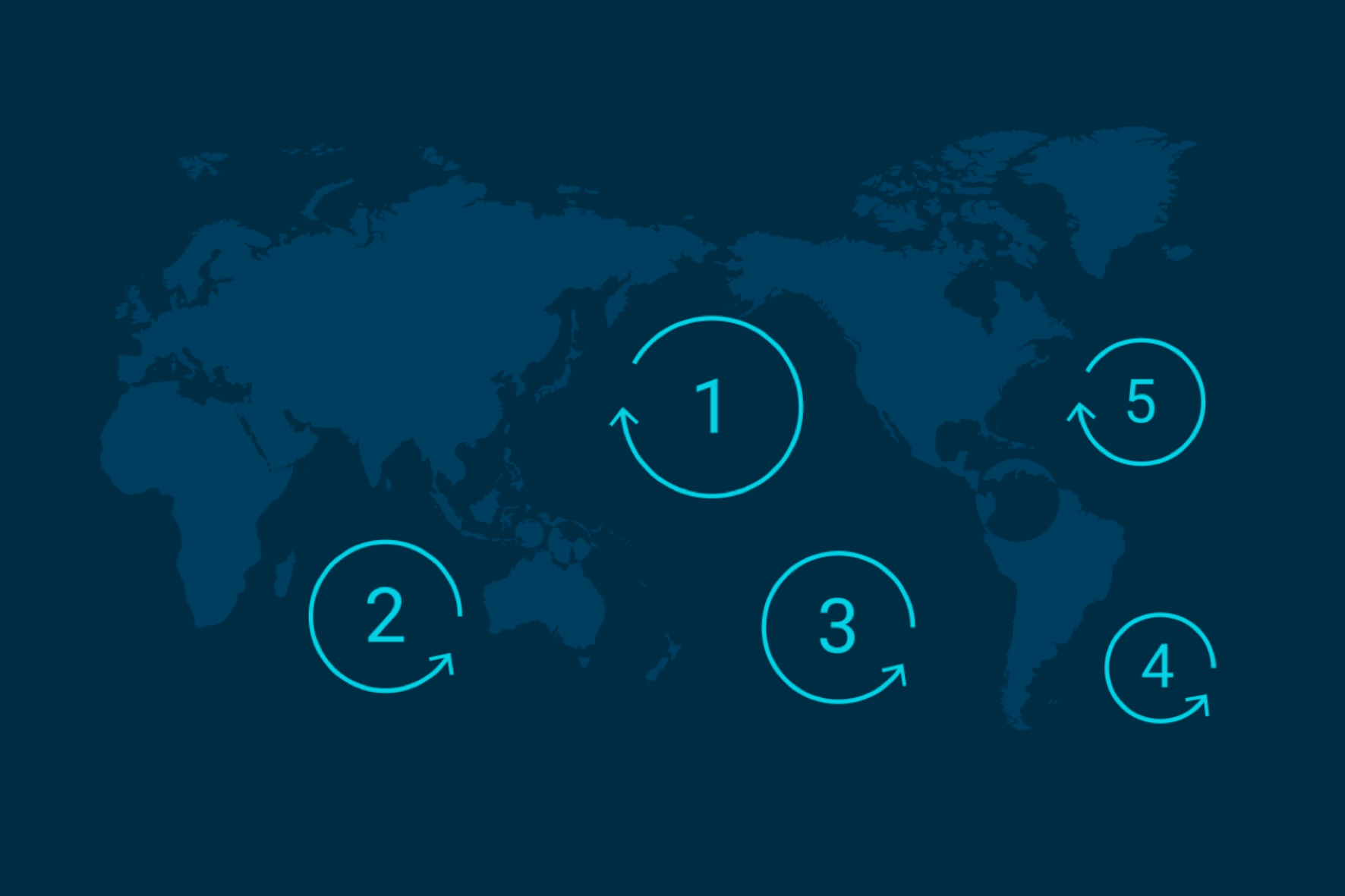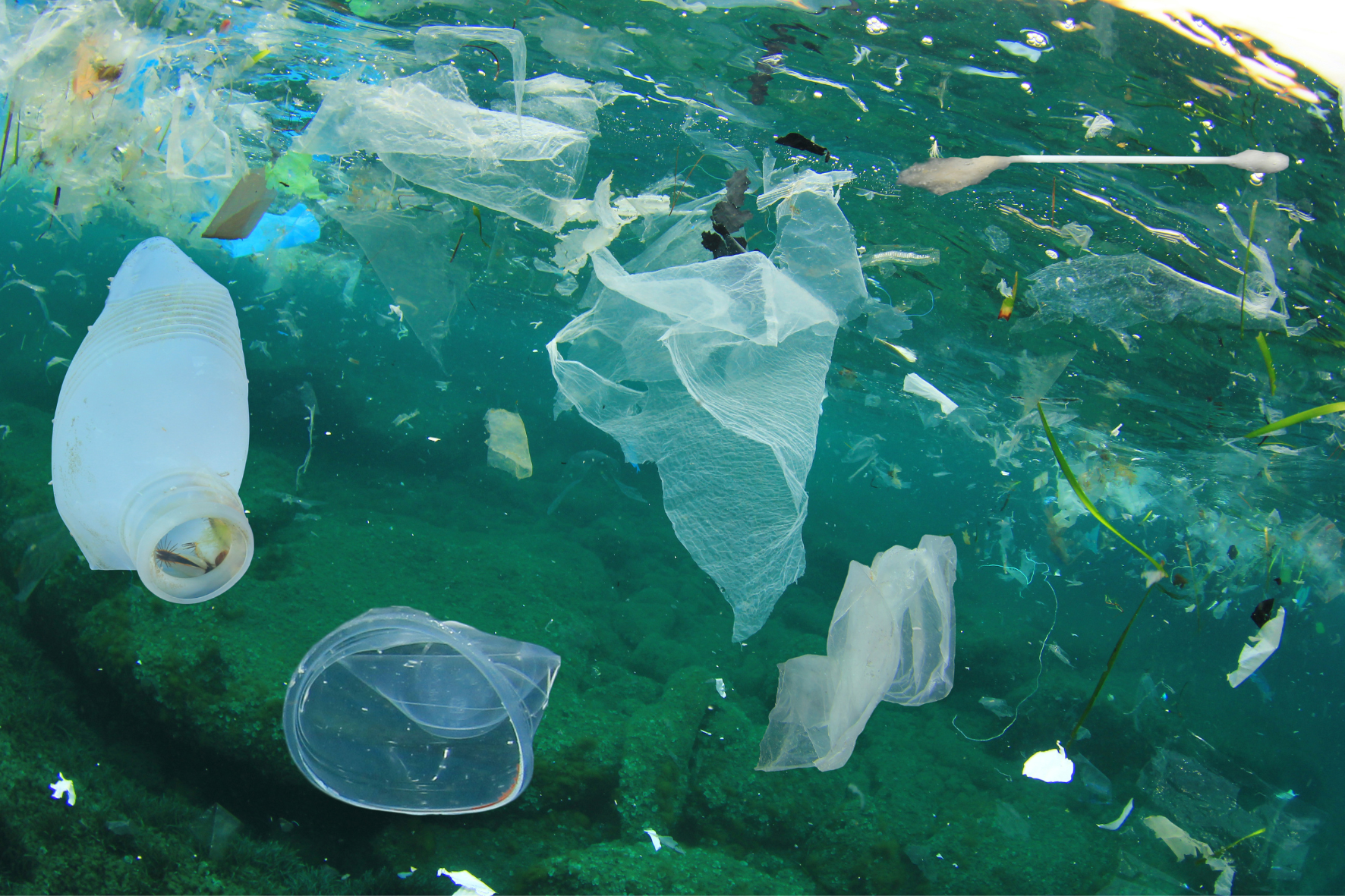
Each year, it is estimated that between 1.15 and 2.41 million tons of plastic are dumped (voluntarily and involuntarily) in the oceans. This pollution can take many forms, visible or invisible. One of them is called the Great Pacific Garbage Patch, also known as the 7th Continent.
1) A continent of plastic
We know the American continent, the African continent, the Asian continent, the Oceanic continent or the Antarctic… And now, we know the Great Pacific Garbage Patch, a pile of plastic waste located in the Pacific Ocean.
There are, in fact, 5 continents of waste, including two in the Pacific Ocean (one in the North and one in the South), two in the Atlantic Ocean (one in the North and one in the South) and one in the Pacific Ocean.

Position of the 5 vortex of garbage (1: The Great Pacific Garbage Patch)
(Source: The Ocean Cleanup)
The largest, Great Pacific Garbage Patch, is a “vortex of garbage” discovered in 1997 by Charles J. Moore, an oceanographer who was returning by sailboat from a maritime race. Large of approximately 1,6 million km², that is to say around 3 times the surface of France, and located between California and Hawaii.
“Day after day, I saw no dolphins, no whales, no fish, I saw only plastic” (Charles J. Moore)
These continents of plastics are in fact agglomerations of macro-waste gathered by what one calls the oceanic gyres, which are zones concentrating immense whirlpools fed by convergent currents and which thus imprison all this waste.
Most of this waste (80%) would be brought by wind and water from the land while 20% would come from fishing gear residues.

Plastic waste pollution in the oceans
“We found a razor. We found a toilet seat. We found a lot of different bottles, like soap and shampoo. We found the sole of a shoe. We found a hardhat. We found a lot of crates. Quite a bit of fishing gear, all bound together, and nets.” (Benoît Lecomte, 2019)
The totality of the Great Pacific Garbage Patch would be equivalent to 80,000 tons of waste, a pile of more than 1.8 billion pieces of plastic.
2) A continent with its own biodiversity
One of the dramatic consequences of this pollution is that the Great Pacific Garbage Patch would now have its own population, and this is not good news.
The population of this new plastic continent was reported by Benoît Lecomte, a Franco-American swimmer, the first to swim across the Pacific Ocean in 1998. Indeed, in 2019, he embarked on the Cortex Swim, a swim across the plastic continent and reported to scientists that he had discovered life amidst the pollution.
This observation by the swimmer was confirmed in April 2002 by a study that revealed the presence of neustons in the Great Pacific Garbage Patch, predominantly located towards the center of the continent. The density of their presence is even among the highest ever observed. Algae, crabs, molluscs and cnidarians (family of jellyfish, corals and sea anemones) were also identified and some of them, like the Blue Sea Dragon (Glaucus atlanticus) are predators.

A Blue Sea Dragon (predator)
These species, which are thought to come from the coast, settle on plastic waste in the same way they settle on pieces of wood. However, the pieces of wood disintegrate with the water, disappearing, leaving the species in a perimeter more or less close to their coast or place of origin. The plastic, on the other hand, does not decompose and transports the species to the Great Pacific Garbage Patch where they reproduce before leaving for other horizons and coasts, sometimes different from their regions of origin.
Studies have yet to be carried out, but the consequences can be dramatic, as marine ecosystems, often already weakened by global warming and human activities, can become unbalanced, new predators appear in certain regions, disrupting fishing and threatening other species, and new viruses can emerge.
3) The emerging part of the iceberg
However, these continents of microplastics would only represent a minority (10%) of the real quantity of plastic present in the oceans. In fact, 90% of the plastic waste in the surface waters of the oceans is present in the form of microplastics, plastic residues smaller than 5 mm, easily ingested by marine fauna.

Microplastics
It is also these microplastics that end up in our plates of fish and other seafood, and consequently, in our bodies.
4) Initiatives to clean up the oceans
Many associations are fighting against plastic pollution and are involved in initiatives and projects to clean up the oceans. This is the case of Ocean Cleanup, an organization founded in 2013 by the Dutch entrepreneur Boyan Slat.

Source: The Ocean Cleanup
However, the net does not pick up waste smaller than 50 mm, which means that microplastics remain in the ocean. It is therefore important to act quickly to recover as much plastic waste as possible, before it disintegrates into micro-plastic.
However, cleaning the ocean of plastic waste is not the solution… It is far from enough ! The solution is to reduce or stop the consumption of plastic and to encourage the recycling of waste before it ends up in nature and the oceans.
Sources:
- https://www.geo.fr/environnement/definition-vortex-ou-tourbillon-de-dechets-du-pacifique-nord-great-pacific-garbage-patch-124624
- https://www.huffingtonpost.fr/environnement/article/le-continent-de-plastique-grouille-de-vie-et-c-est-une-tres-mauvaise-nouvelle_216817.html
- https://www.nationalgeographic.fr/environnement/2022/10/le-7e-continent-pourrait-il-etre-amene-a-disparaitre
- https://information.tv5monde.com/info/le-7eme-continent-un-monstre-de-plastique-1863
- https://www.lemonde.fr/planete/article/2012/05/09/le-7e-continent-de-plastique-ces-tourbillons-de-dechets-dans-les-oceans_1696072_3244.html
- https://www.ifaw.org/fr/journal/plastique-pollution-ocean
- https://www.nationalgeographic.com/adventure/article/great-pacific-garbage-patch-swim-science
- https://theoceancleanup.com/great-pacific-garbage-patch/
- https://www.ecologie.gouv.fr/dechets-marins




